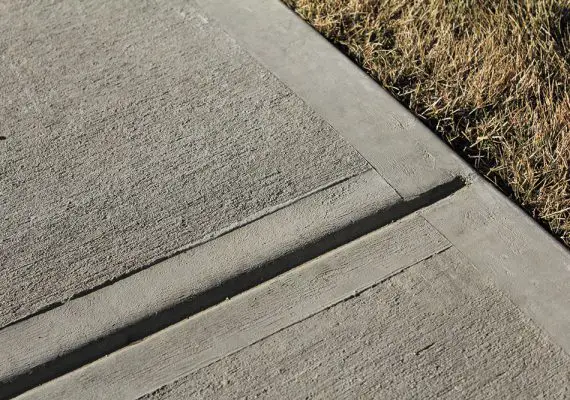What Is A Lime Mortar? Uses Of Lime Mortar
What Is A Lime Mortar?
Lime mortar is a mixture of lime, an aggregate such as sand, and water, used in construction. It was used by the ancient Egyptians and Greeks and in ancient Indian and Roman structures.
It has been used less in recent times due to the widespread adoption of Portland cement which is easier to use and has a higher compressive strength.
However, lime mortar has certain advantages when working with softer building materials, and it is still used in the repair and restoration of older structures built with lime mortar.
Lime mortar has been used for centuries, but only in recent decades has its durability been scientifically studied. It can be purchased pre-mixed in small batches from companies that specialize in historical preservation.
Lime mortar can be easier to work with for longer periods of time, even when used on absorbent masonry, because it remains more flexible than cement mortar.
When denser mortars, like cement, are used on softer masonry such as sandstone, they can create local stress that can weaken the masonry.
Additionally, lime mortar is more “breathable” or vapor permeable, and thus less likely to trap moisture within the construction, and better able to handle moisture changes and prevent damage from salts.
Unfortunately, some contractors who are not well informed may still use cement mortar on masonry that would be better served by lime mortar, which can result in long-term deterioration.
Uses Of Lime Mortar
Lime mortar is used for the preservation of buildings constructed with lime mortar and as an alternative to Portland cement. It is composed of lime, water and aggregate-like sand.
Portland cement is not compatible with lime mortar because it is less flexible, harder and not permeable, which can lead to the deterioration of soft historic bricks.
Therefore, low-temperature fired lime mortars are often recommended for use with existing similar mortar or for the reconstruction of buildings using historically accurate methods.
In the past, the lime mortar was mixed on-site using locally available sand which would affect the color of the lime mortar and cause the colors of the pointing mortar to vary widely from region to region.
Lime mortar has a long history of use in construction, dating back to ancient Roman times. It was originally made by burning limestone or shells to produce lime which was then mixed with water and an aggregate such as sand to create a mortar.
Lime mortar is different from Portland cement in that it is more porous and has a lower compressive strength. This makes it more suitable for use in historic buildings, as it allows for the natural expansion and contraction of building materials and allows moisture to pass through the mortar, reducing the risk of damage caused by trapped moisture.
Types Of Lime
Lime mortars are an important component in masonry constructions and can be made from many different types of lime.
Hydraulic Lime
Hydraulic lime is a type of lime made from calcium oxide, also known as quicklime, that hardens when it comes into contact with water. It is different from slaked lime, or calcium hydroxide, which is used to make lime mortar and sets through a process called carbonation, in which it absorbs carbon dioxide from the air.
Hydraulic lime sets faster and has a higher compressive strength than slaked lime, and can even set underwater. It is possible for a lime to be both hydraulic and hydrated, meaning it hardens through both hydration and carbonation.
This is known as semi-hydraulic lime and is classified as feebly or moderately hydraulic, with NHL 2 and NHL 3.5 being the most common classifications.
Non-Hydraulic Lime
Non-hydraulic lime is a type of lime that is primarily made of calcium hydroxide, which is obtained by heating calcium carbonate to high temperatures in a lime kiln. This process, called calcination results in the production of quicklime (calcium oxide).
Quicklime is then mixed with water to create a slurry or putty called hydrated lime (calcium hydroxide). Non-hydraulic lime can also be made from dolomitic limestone, which is composed of calcium magnesium carbonate.
Non-hydraulic lime sets slowly and is not as strong as hydraulic lime but it has the ability to self-heal by filling any cracks that may form with dissolved lime. Non-hydraulic lime putty is typically matured for a period of time before it is used in mortars as this improves its quality.
The term “hydrated lime” can refer to any type of lime that is not quick lime, including both hydraulic and non-hydraulic lime.
Types Of Lime Mortar Mix
There are various types of lime mortar mixes available for purchase, including ready-mixed and hot mix varieties. It can be confusing to determine which one is the most suitable for a particular application. Mortar mixes are classified based on their compressive strength and bonding properties, as well as their flexibility.
When selecting a mortar mix, it’s important to consider not just its strength and resistance, but also its use, adhesion, and sealing requirements.
Historically, hot-lime mortars were commonly used in traditional construction, which are made by mixing quicklime and sand rather than slaked lime and sand. Recent tests have shown that hot-lime mortars tend to have better mechanical and bond strength compared to cold-manufactured mortars.
However, it should be noted that the hot mix does not need to be used immediately and can be left to cure for a period of time, such as a day, before being applied.
Applying And Mixing Lime Mortar
Applying and mixing lime mortar is a crucial part of any building project. It requires precise attention to detail, as the proper application of the mortar depends on its consistency, which can be affected by factors such as temperature, humidity, and the ratio between its components.
For example, if too much water is added to lime mortar during mixing it will become runny and tricky to work with. The sand and lime mix should also be dry when mixed together in order for it to create a strong bond when applied.
Once the correct consistency is achieved, apply it using a trowel taking care not to leave air pockets behind which could affect its strength later on.
Conclusion
In conclusion, it is clear to see that lime mortar is a valuable material for construction, and should be considered when planning any building project.
Its ability to last far longer than cement mortar, and staying more flexible during temperature change makes it the perfect choice for many applications. Although it can be difficult and time consuming to make with hand tools, the end result is well worth the effort.


